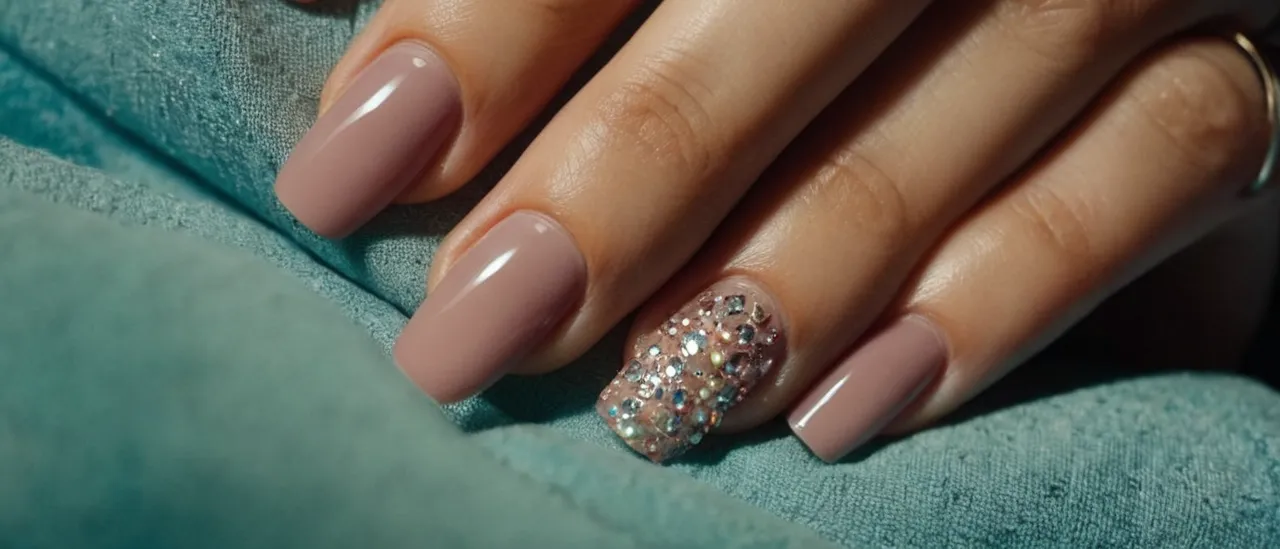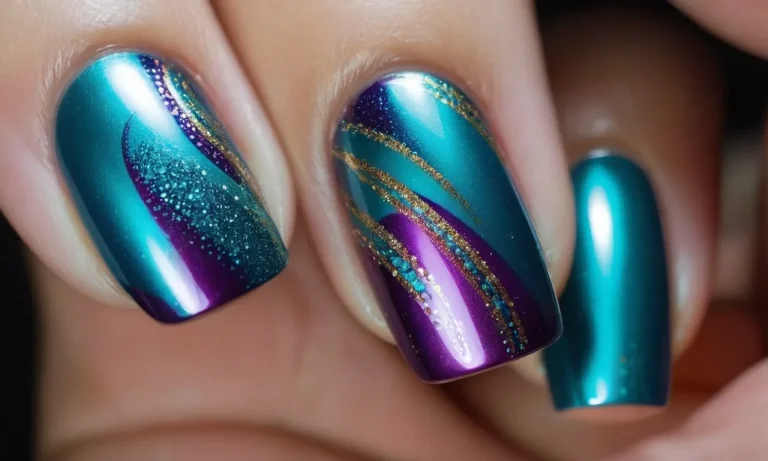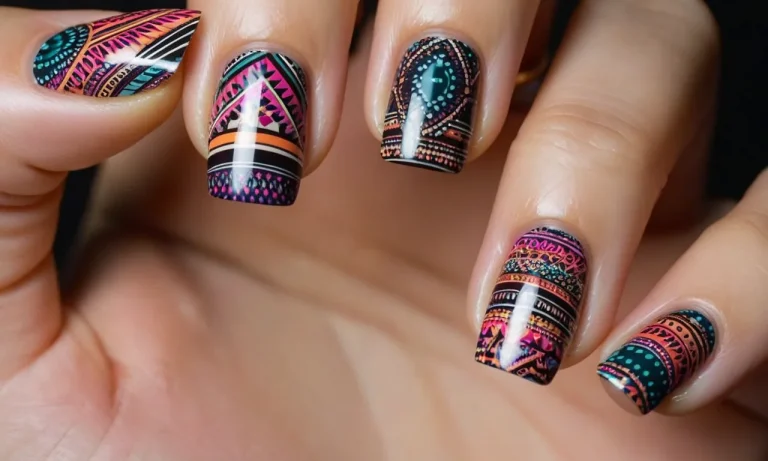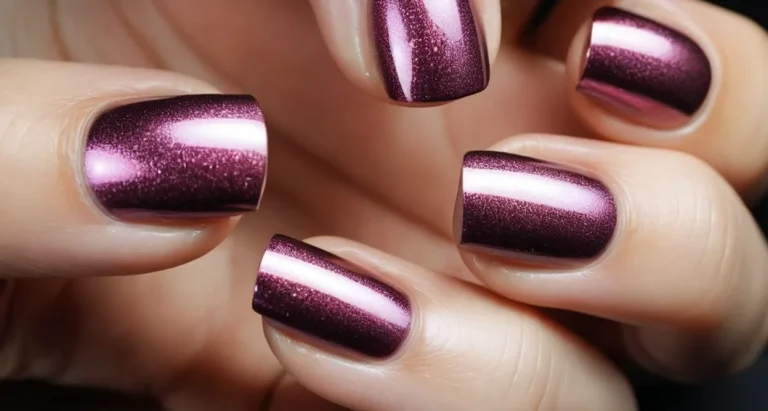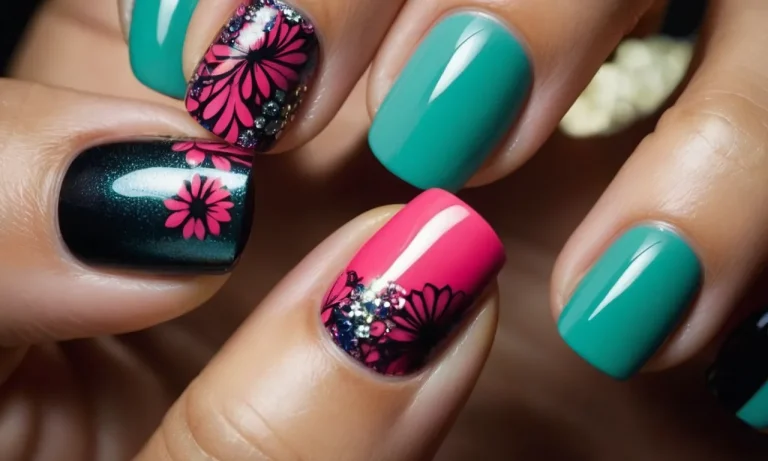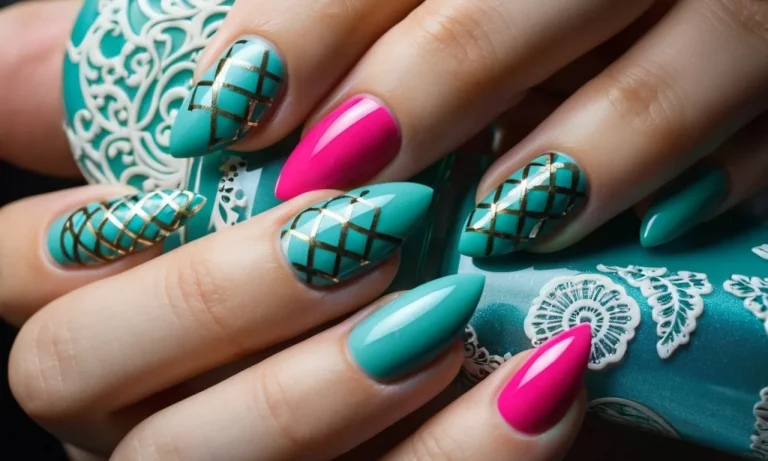How Long Should You Let Your Nails Breathe Between Acrylics
Getting acrylic nails can make your nails look fabulous, but you need to give your natural nails time to recover between sets. Applying acrylics too often can lead to nail damage and infection. So how long should you actually wait before putting on a fresh set of acrylics?
If you’re short on time, here’s the quick answer: You should let your natural nails breathe without enhancements for at least 2-4 weeks between acrylic sets. Giving your nails this break allows moisture to get to the nail bed, prevents excessive thinness and brittleness, and lowers infection risk.
In this comprehensive guide, we’ll cover everything you need to know about letting your natural nails recover between bouts of acrylics, including:
What Are Acrylic Nails?
Acrylic nails have been a popular artificial nail option for decades. They are formed by applying a liquid acrylic resin and polymer powder to natural nails and shaping them into the desired style. Here’s an overview of what acrylics are made of and how they are applied:
What acrylic nails are made of
The main ingredients in acrylic nails are:
- Polymethyl methacrylate (PMMA) – a plastic resin that provides structure and strength
- Ethyl methacrylate (EMA) – a liquid monomer that allows the acrylic to adhere to the natural nail
- Benzoyl peroxide – a catalyst that hardens the acrylic once mixed
- Titanium dioxide – a white pigment that gives acrylics their color
These ingredients are mixed together into a thick, putty-like consistency and used to build acrylic nails on natural nails. Acrylic resin is lightweight, durable, and can be shaped and customized in many ways. The finished acrylic nail is quite rigid and hard.
How acrylics are applied
The application process for acrylic nails typically follows these steps:
- The natural nails are filed to rough up the surface and remove shine so the acrylic can bond properly.
- An acrylic primer is applied so the acrylic adheres well.
- Acrylic powder and liquid are combined and applied using a brush, building the acrylic nail structure.
- The acrylic is shaped into the desired length and style using nail files and buffers.
- The acrylic nails are sealed by applying a liquid, paste, or powder on top to smooth the surface.
It takes considerable skill and precision to properly apply acrylics. The entire process generally takes around an hour. Fill-ins are needed every 2-3 weeks as the natural nail grows out to maintain the length and look of acrylics.
Acrylics should be completely replaced every 2-3 months to prevent damage and lifting.
While beautiful, acrylic nails also pose some risks, like infection or nail damage if improperly applied or maintained. Following proper acrylic nail care guidelines is important. When done correctly by a skilled nail technician, acrylics allow for dramatic nail styles and strengthening of weak natural nails.
Their versatility and customization options contribute to their enduring popularity.
Why You Should Let Your Nails Breathe Between Acrylics
Prevents moisture deprivation
Getting acrylic nails constantly applied can deprive your natural nails of moisture and cause them to become dry and brittle. Letting your natural nails breathe in between acrylic sets allows them to rehydrate and recover their flexibility.
A good rule of thumb is to give your nails one week of breathing room for every 2-3 weeks of acrylic wear. Keeping them well-moisturized during the break with cuticle oil will restore their health.
Avoids excessive nail thinning
The acrylic application and removal process involves a lot of filing and buffing which can thin out your natural nails over time. Letting your nails go bare for a while gives them time to grow out and regain thickness and strength. This helps prevent weak, peeling nails in the future.
Aim for nail breaks that are long enough to allow decent new growth, around 2-3 weeks.
Lowers infection risk
Having acrylics constantly applied increases the risk of trapping moisture and bacteria under the false nails. This creates an ideal environment for infections to develop. Allowing your natural nails to be free of acrylics periodically lets air in and gives you a chance to fully inspect and clean your nail beds.
Experts recommend an acrylic break of 1-2 weeks every 2 months to avoid infectious risks like green nails or onychomycosis (nail fungus).
How Long To Wait Between Acrylic Nail Sets
2 weeks minimum
Experts recommend waiting at least 2 weeks between acrylic nail appointments. This allows the nail bed to recover from the stress of acrylic application and avoid overexposure to chemicals. Rushing appointments increases the risk of infection, breakage, and thinning nails.
During the 2 week period, massage nail oil into the bare nails to stimulate growth and circulation. Jojoba, vitamin E, and coconut oils work well. Stay hydrated, use gloves for chores, and avoid picking at nails.
This healing time lets nails regenerate so they can properly bond with the next acrylic set.
4 weeks is better
While 2 weeks between sets may seem quick for nails to recover, 4 weeks is even better. This extended break gives more time for damaged parts of the nail bed to grow out and for nails to regroup. For those who got acrylics removed, 4 weeks allows the nail plate to fully renew itself before another application.
With each added week off, risk goes down for thinning nails, infections under lifted acrylics, and other unfavorable outcomes. Be patient and think about nail health first before rushing back to the salon. Nails will be stronger for the next sculpted set after a 4 week rest.
Special cases where more time is needed
Those with preexisting nail issues may require more recovery time than 4 weeks between sets:
- Brittle, peeling nails – 6-8 weeks
- Fungal infections – Treatment plus 8 weeks
- Damaged nail bed – Up to 3 months
Listen to what your body needs and don’t overload nails with continuous acrylics. Periodic long breaks can make a world of difference in the long run. For special events, stick to gel polish or nail art as safer temporary options.
| Recovery Time | Nail Condition |
| 2 weeks | Healthy nails |
| 4 weeks | Average, growing nails |
| 6-8 weeks | Brittle, damaged nails |
| 3+ months | Injured nail bed |
Visit sites like Byrdie and HelloBeautiful for more acrylic nail care tips! 💅
Tips For Letting Your Nails Recover
Moisturize your nails
Keeping your natural nails moisturized is key during the recovery period between acrylic sets. Pick up an intensive nail and cuticle oil from your local beauty supply store or pharmacy and massage it into your nails and cuticles once or twice per day.
Jojoba oil, vitamin E oil, and coconut oil also make great natural moisturizers. The hydration will help reverse any dryness or brittleness caused by the acrylics. If your nails are peeling, a moisturizing nail hardener can help reinforce them.
Avoid other enhancements
It’s best not to put your nails under any more stress during the weeks between acrylic sets. Hold off on gel manicures, silk or fiberglass wraps, nail polish, and artificial tips. Let your natural nails breathe without any enhancements.
This gives them the chance to fully normalize in thickness and strength. If you must paint them, use a nourishing base coat first, and be diligent about removing polish gently with acetone-free remover to avoid weakening the nails.
Try nail strengthening products
Help get your nails back into top shape by using nail hardeners and strengtheners during the break period. Many contain hydrating oils as well as fortifying ingredients like calcium, peptides, and hydrolyzed wheat protein.
Apply the product directly to bare nails daily according to package directions. Most products take 6 weeks or longer to reveal optimal results. Hydroxymethylglycinate is an especially effective active ingredient to look for.
Watch for changes in nail health
As your natural nails grow out, check for abnormalities like unusual thickness, splitting, grooves, or discoloration. An estimated 15% of people develop nail damage from long-term acrylic use, so issues could signal underlying problems.
If the problems persist more than a month post-acrylic removal, visit your doctor or dermatologist. They can rule out infections and other causes, and provide specialized treatments to get your nails looking their best again.
When To See A Doctor About Your Nails
If you have nail fungus
Nail fungus, also known as onychomycosis, is a common condition that can leave nails looking yellowed, brittle, or distorted. It’s caused by a fungal infection that takes hold under or inside the nail.
If you suspect you have nail fungus, it’s important to see a doctor for proper diagnosis and treatment. Here’s why:
- Nail fungus won’t go away on its own. The fungus will continue to grow and damage the nails without proper antifungal medication.
- Over-the-counter treatments are often ineffective. Prescription oral or topical antifungal medications are usually needed to clear up stubborn fungal nail infections.
- The sooner you start treatment, the better. Treating nail fungus in the early stages helps prevent permanent nail damage and makes it easier to eradicate the infection.
- Your doctor can identify the fungus. A laboratory test may be done to identify the type of fungus causing the infection so the proper medication can be prescribed.
- Nail fungus can spread. If one nail is infected, there’s a risk of other nails becoming infected too. Proper treatment helps eliminate the fungus before it spreads.
Don’t try to scrap off nail fungus with tools or home remedies. See your doctor at the first sign of a possible fungal nail infection for a proper diagnosis. Prescription oral antifungal medications, such as terbinafine or itraconazole, are often needed for several weeks to cure stubborn fungal nail infections.
But taking action at the first sign of nail fungus gives you the best chance of regrowing healthy nails.
If your nails seem infected
In addition to fungal infections, bacterial or viral infections can also affect the nail area, causing redness, swelling, pain, and pus. Signs your nails may be infected include:
- Redness or swelling around or under the nail
- Accumulation of pus (thick, opaque to yellowish fluid)
- Foul odor coming from the nail
- Severe pain or throbbing
- Fevers or chills
Nail infections require prompt medical treatment to prevent the infection from worsening, damaging the nail matrix, or spreading to other fingers and toes. Untreated nail infections can also enter the bloodstream and lead to serious complications.
It’s crucial to see a doctor right away if your nail shows signs of infection.
Your doctor will determine if the infection is fungal or bacterial and prescribe appropriate oral or topical antibiotic or antifungal medication. For severe infections, the doctor may numb the area and drain fluid from under the nail to relieve pain and pressure.
Leaving nail infections untreated can result in permanent nail loss and other serious health risks.
If your nails are cracked, brittle or keep breaking
Repeated cracking, splitting, peeling or breakage of the nails may indicate an underlying health condition or nutrient deficiency. Some possible reasons your nails become fragile and easily damaged include:
- Iron deficiency or anemia
- Hypothyroidism (underactive thyroid)
- Celiac disease
- Skin disorders like eczema or psoriasis
- Frequent use of nail polish removers, gels, acrylics or harsh cleaners
- Not enough moisture – chronic dehydration
If your nails seem weak no matter what you do, it’s a good idea to see your doctor or dermatologist. A simple blood test can check for iron, thyroid, or nutrient deficiencies. The doctor can also examine your nails and skin for underlying conditions.
Treating the cause of fragile nails is key to regrowing stronger, healthier nails that don’t crack and split as easily.
In the meantime, moisturize nails and cuticles daily with a nourishing oil or cream. Wear cotton-lined rubber gloves when washing dishes or cleaning with chemicals. Avoid excessive use of nail polish remover and give nails a break from gels, acrylics, or falsies.
A daily multivitamin can also help supply nutrients for healthy nail growth.
With proper care and treatment of any underlying causes, you can get your nails back in good shape. But see your doctor sooner than later if your nails seem exceptionally weak or keep breaking. Identifying and addressing any health issues is key to improving the condition of fragile nails.
Conclusion
Giving your natural nails a break between acrylic sets is crucial for maintaining healthy nails and cuticles. Aim for at least 2-4 weeks between sets to allow moisture and nutrients to reach the nail bed. Moisturize nails in the interim and avoid other enhancements during recovery periods.
With some TLC for your bare nails, you’ll be ready to rock your next fabulous set of acrylics in no time!

